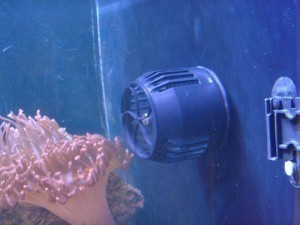What is the Size of an Aquarium Water Pump?
If you look at the various aquarium water pump sizes, you will find measurements like 6 x 3 x 3 inches, 7 x 4 x 4 inches, 8 x 6 x 5 inches and 6 x 3 x 4 inches. There are other bigger pumps for sale as well.
Overview
These machines are used to keep an aquarium in good shape. This device ensures that the fish and other inhabitants of the tank remain healthy. What the pump does is produce oxygenation and water circulation. The pump is a small apparatus that is connected outside the aquarium. Some units can be immersed, but this is not always the case.
External and Submerged Pumps
Whatever the aquarium water pump sizes are, the external ones are the most powerful. Unlike other variants, they will not heat the water. That is the drawback with submersible pumps. They must always be checked to see if the temperature is right.
How to Select the Right Pump
Remember that the power and dimensions of the pump have to be commensurate to the aquarium dimensions. You also have to consider how much water the aquarium holds. If the tank is big, you must get a powerful pump. This is necessary so the water can circulate properly. You also have to be certain the tank water goes through the device.
Every hour there should be numerous “turn overs”. The proper frequency hinges on the organisms that are kept in the tank. The water movement is gauged in GPH (gallons per hour).
If the tank contains 20 gallons and has a turnover rate of 5 times every 60 minutes, you must get a 100 GPH pump. If your tank has invertebrates, coral reefs and other organisms, powerful pumps are required.
This is necessary because these organisms utilize the natural current for their feed cycle. If the tank is big, it is a good idea to use two small pumps. With two pumps, you are assured of having a backup in case one fails.
Filtration
Apart from choosing the right aquarium water pump sizes, you also have to be certain the water enters through a filtration system. This will ensure the water is not polluted by waste produced by particles, decaying matter and dirt generated by organisms. The most vital are the mechanical and biological filters.
The biological filters are made up of useful bacteria. They eliminate dangerous organic waste. The mechanical filter is designed to keep debris away from the tank. This ensures nothing will clog the system.





